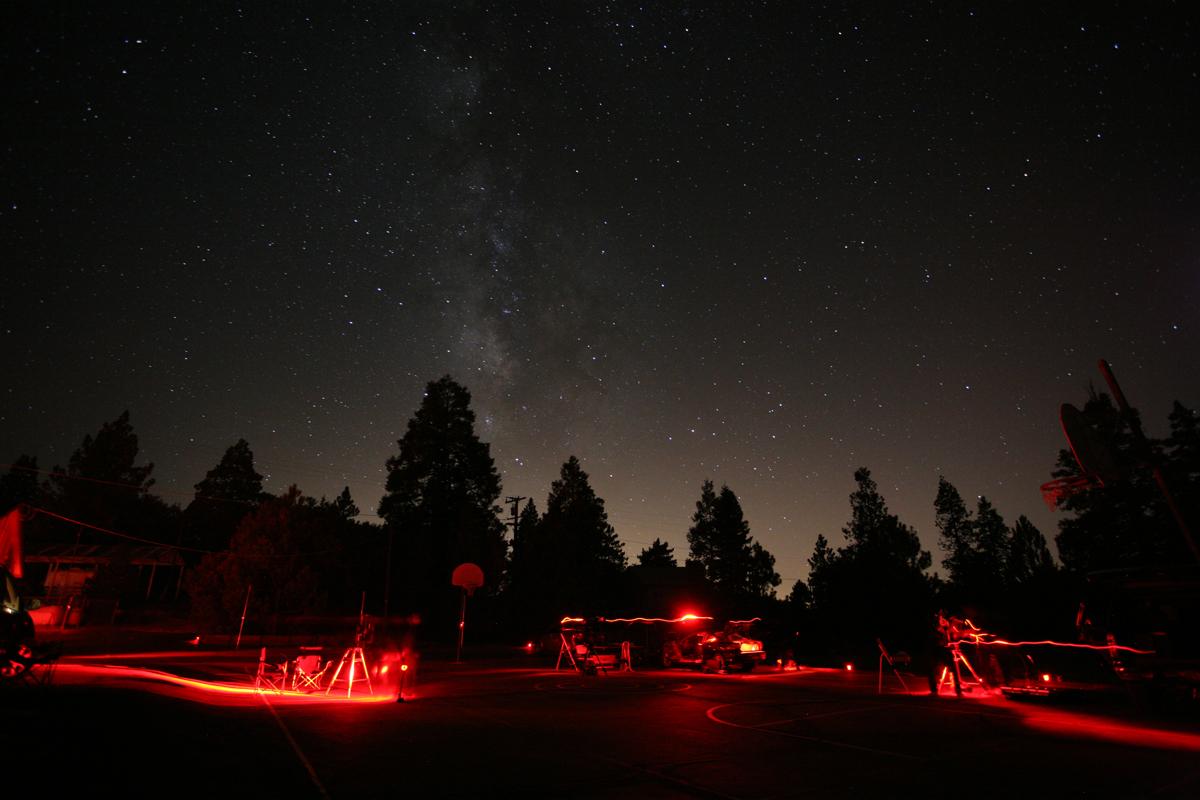
Until last night when it rained we've been having some good dark nights lately, nicely coinciding with clear skies and little or no moonlight. The photo above was taken a week ago during a star party at our Outreach Center while the big scopes were out hunting for transients and studying neutron stars. The photo was captured before the low coastal clouds blew in covering the city lights and thus making it even darker.
You'll hear more about this in the future, but we have begun a new long-term project of monitoring the sky brightness over Palomar. This comes at a very important time. Outdoor lighting is at a crossroads as new lighting technologies (such as LEDs) and government stimulus money may bring about sweeping changes to street lighting. The big threat to dark skies is that the new lights are whiter and as a result they have a much greater amount of blue light in them. Unfortunately it is blue light that most greatly contributes to sky glow.
LEDs and othe white light sources have the potential to greatly increase the amount of light pollution, effectively wiping away the night sky for everybody. But LEDs do have some promise to dim light pollution. For that to happen cities will need to dim their lights after hours and even turn them off when they are not needed.
Light pollution is a world-wide issue. At the recent meeting of the International Astronomical Union, astronomers endorsed the idea that everybody has the right to see starlight. You can read the resolution as it was adopted here (It is Resolution 5B on page 5. Adobe Acrobat required).



No comments:
Post a Comment